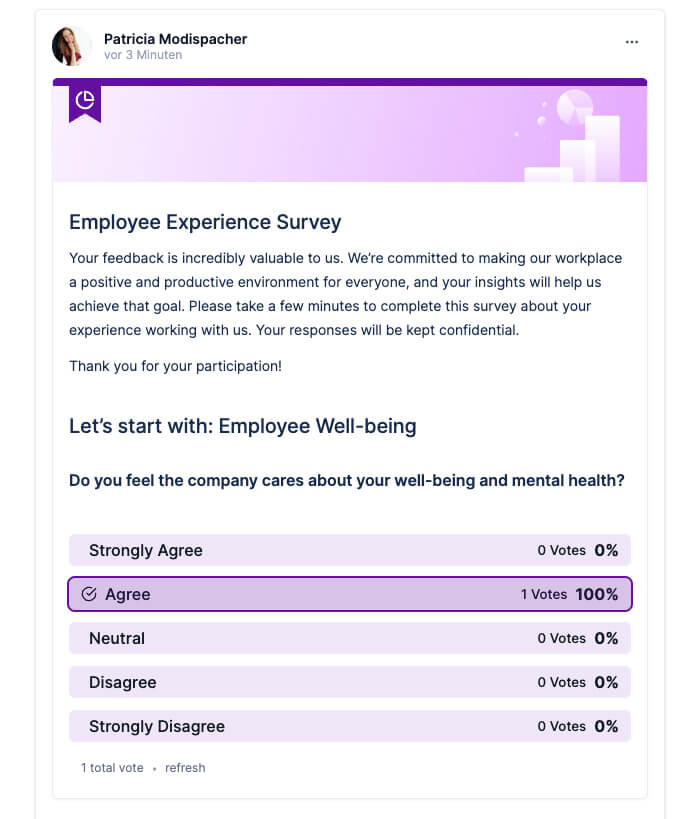
How to Create Stunning Project Status Reports in Confluence
Struggling to keep everyone updated on the project status? We’ll show you how to easily

Every department has its own story to tell, its own superpower. When we join forces, we can achieve extraordinary things. Cross-team collaboration is the secret formula to unleashing your company’s full potential. But what exactly is cross-team collaboration, and why is it so vital for business success?
Let’s explore how to assemble your dream team and conquer the world (or at least your industry).
Cross-team collaboration, also known as cross-functional team collaboration, refers to the process where different teams or individuals work together to achieve a common goal. It involves breaking down silos and leveraging the diverse expertise and perspectives of team members from various departments. By embracing this collaboration approach, you can tackle complex projects, drive innovation, and achieve shared objectives more effectively.

As the saying goes, “Teamwork makes the dream work”, cross-team collaboration carries significant benefits for your employees, team, and organization as a whole.
But how exactly does this collaboration boost your business?
The magic of collaboration shines through when a diverse mix of skills, knowledge, and experience come together at the table. By divvying up tasks and responsibilities based on everyone’s unique strengths, teams not only save time but also rev up their productivity. It’s all about having the right person for each job, making projects run smoother and faster than going solo. That’s why cross-team collaboration is the secret sauce behind many business tasks, projects, and goals.

Let’s take launching a marketing campaign as an example. This endeavor calls for a tag team effort from various departments. We’ve got the creative minds of graphic designers and content writers crafting eye-catching marketing materials. And since data rules the roost, we’ve got data analysts pinpointing targets and measuring success. Don’t forget our sales squad, ensuring everything aligns strategically, and our managers steering the ship. Each team member brings their A-game, and together, they make sure the campaign hits the mark and rings in success.
Cross-team collaboration is a fantastic way to boost adaptability in the workplace. By encouraging the exchange of diverse ideas and perspectives, collaboration brings together a wide range of skills, knowledge, and resources. This allows teams to tackle a variety of challenges more efficiently than those with a narrower skill set.
Additionally, collaboration helps create a culture of continuous learning and improvement – and sparks innovation! When team members from different departments work together, they gain fresh insights and approaches, enhance their skill sets, and collectively come up with new ideas.
On a broader scale, collaborating across teams can really boost overall performance. But when you zoom in, it’s also a key player in boosting team spirit. Working together helps team members bond and feel appreciated, resulting in a more driven and united crew.

In fact, team morale is accompanied by an increase in overall employee well-being. In a recent study, it is shown that teamwork can reduce emotional exhaustion and increase professional accomplishment, thereby preventing burnout.
(Knowledge-) Sharing is caring, and collaboration in the workplace proves it.
Cross-team collaboration can bring many benefits to an organization, but making it work smoothly is often challenging. If not executed properly, it can lead to office drama or hinder performance.
Here are some common pitfalls that can disrupt effective collaboration:
Cultural Differences: International teams bring diverse cultural backgrounds, which can cause misunderstandings. For instance, direct communication in one culture might be considered rude in another. Communication styles differ between and within cultures (metaphorically described as ‘peaches’ or ‘coconuts.’)
Poor Leadership: A boss is not necessarily a leader. Strong leadership is essential for guiding and coordinating cross-team efforts. Without it, teams may lack direction, motivation, and coherence. Leaders need to foster open communication, set clear goals, and resolve conflicts quickly.
Different Time Zones: Coordinating meetings and projects across various time zones can be challenging. Time zone differences can delay communication and decision-making processes. Effective management of asynchronous working hours is crucial.
Communication Barriers: As we explained in our article about communication barriers, effective communication is the backbone of collaboration. Language differences, business jargon, and varying communication styles can hinder it. Without the right tools, miscommunication can lead to errors, duplicated work, slow processes, and missed deadlines, causing frustration and impacting customers.
Multiple Reporting Relationships: Cross-functional teams often face pressure regarding reporting tasks or projects. Understanding whom to report to and when can be complicated, leading to confusion and inefficiency.
Misaligned Goals and Priorities: Different teams might have conflicting priorities and goals. For example, a marketing team might focus on brand awareness while a sales team targets quarterly sales. Without a shared vision and alignment, these conflicting perspectives can cause friction and hinder collaboration.

So, how can you overcome these hurdles and unlock the full potential of cross-team collaboration? Let’s dive into practical strategies to foster a culture of teamwork and innovation.
Here are 5 strategies:
Clear roles and responsibilities play a key role in fostering effective collaboration. It’s crucial that every team member knows exactly what their role entails and how it adds value to the company. This clarity is a game-changer, helping to steer clear of mix-ups and redundant efforts.
The role of leaders or project managers is especially vital in this mix. When multiple teams join forces, clashes are inevitable among team members. That’s where team leaders step in to assign tasks, offer support, and ultimately make the tough calls when challenges crop up.

This example shows a Confluence home page, introducing new colleagues.
Documentation is key to maintaining transparency and accountability in collaborative projects. Team members should be aware of who is working on what. The best method is to regularly share your team’s projects and upcoming work through a centralized platform.
Tools like Confluence allow teams to create and maintain clear records of processes, decisions, and project progress. These documents serve as a centralized source of information, ensuring that all team members are on the same page and can easily access relevant updates.
For instance, documenting meeting minutes, project timelines, and task assignments in Confluence keeps teams organized and informed. Plus, it creates a historical record that can be referenced as the project progresses.


Imagine your company as a ship navigating the vast ocean. Each department is a crew member with a specific role to ensure the ship reaches its destination. Without a shared destination, everyone might be rowing in different directions, causing chaos and hindering progress. This is where a shared vision and common goals come in—they provide a unifying purpose for cross-functional teams.
This alignment also helps in prioritizing tasks, making decisions, and resolving conflicts more efficiently. Suppose the marketing team wants to launch an ad campaign, but the development team needs more time to fix some critical bugs. With a shared vision, both teams can communicate and prioritize these tasks effectively, ensuring that the product launch is smooth and successful.
Empowerment is crucial for fostering a collaborative and innovative environment. Give team members the autonomy and trust to make decisions and contribute their best work. Empowered teams are more likely to take ownership of tasks, propose creative solutions, and collaborate proactively with colleagues.
For example, involve team members in decision-making processes related to their expertise. If you’re working on a new software feature, let your developers decide on the best technical approach. Similarly, allow marketing teams to choose the strategies they believe will most effectively reach your target audience. Planning to launch your new company intranet? Let your employees pick the name!
Dare to give your team the feeling that they have a say in every decision and their feedback matters.

This sense of responsibility encourages proactive collaboration and can lead to increased job satisfaction and higher productivity. See more strategy ideas in our article: 10 Tips to Improve Employee Experience.
Seamless communication is the cornerstone of successful cross-team collaboration. When cross-functional teams use different applications or communication tools, this can cause a huge problem communicating. Decentralized information can make it difficult for employees to know about project updates or tasks. It can also be time-consuming for employees to use and learn various applications.

Provide teams with the right tools, such as a unified social intranet platform like Mantra (seen above) or collaboration software like Confluence, to facilitate real-time communication and project updates. This can give cross-functional teams insight into business workflows, reduce overlap, and make it easier to resolve issues before they escalate.
Think back to the superhero universe, where every department has its own unique superpower. When these powers unite, they form an unstoppable force capable of overcoming any challenge.
We have explained the best strategies for making cross-functional collaboration a success in your company. But remember that the right technique is essential.
Tools like Confluence and Mantra can be the catalysts that bring these superpowers together, ensuring your teams work together effectively. Embrace cross-team collaboration, and watch your organization transform into a powerhouse of creativity and efficiency.
Supercharge your Confluence

Struggling to keep everyone updated on the project status? We’ll show you how to easily

Tired of endlessly scrolling through Confluence to find what you need? We’ll show you how

The right intranet can make the difference if you thrive your simply survive. We’ll show

You are currently viewing a placeholder content from Wistia. To access the actual content, click the button below. Please note that doing so will share data with third-party providers.
More Information